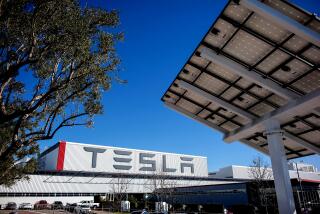Bottom Line : Debt Be Not Proud
- Share via
It’s embarrassing, really, how a little recession can scruff up your image. Only three years ago, the Los Angeles-Long Beach area led the nation in “effective buying income,” or EBI, which is essentially a measure of how self-indulgent people can afford to be. These days, we’re running neck and neck with Huntsville, Ala.
The median Southern Californian can barely afford to park on Rodeo Drive anymore, let alone shop there, according to a recent survey published by Sales & Marketing Management magazine.
L.A.’s median per-household EBI of $38,575 is far behind the nation’s leader -- Middlesex-Somerset in New Jersey with an EBI of $62,774, as well as the EBIs of Chicago, Philadelphia, Dallas and Jersey City. Even Cedar Rapids, Iowa, and Rochester, Minn., out do us. (San Jose is tops in California, at $52,488).
“Southern California is not an upscale market,” declares Kurt Barnard, publisher of Barnard’s Retail Marketing Report, a hot read among trend-conscious merchandisers. “Any sense of opulence is an illusion,” he says, a Potemkin prosperity made up of pyramiding credit-card debt, leasing (as opposed to buying) and spending instead of saving.
The significance of all this isn’t lost on retailers. Although Southern California has many of the same tony stores as the leading markets, local outlets tend not to be as big, or high-end, as what Barnard calls “the chains’ flagship locations.”
But there’s some reason for optimism. Even though Southern California still trails the rest of the country in recovering from the recession, experts are beginning to see signs of life in the local economy. Let’s hope the rebound is for real. We don’t want to concede the title of “The Golden State” to Illinois or Pennsylvania or, God forbid, New Jersey.
More to Read
Inside the business of entertainment
The Wide Shot brings you news, analysis and insights on everything from streaming wars to production — and what it all means for the future.
You may occasionally receive promotional content from the Los Angeles Times.










